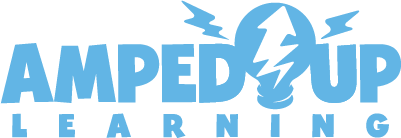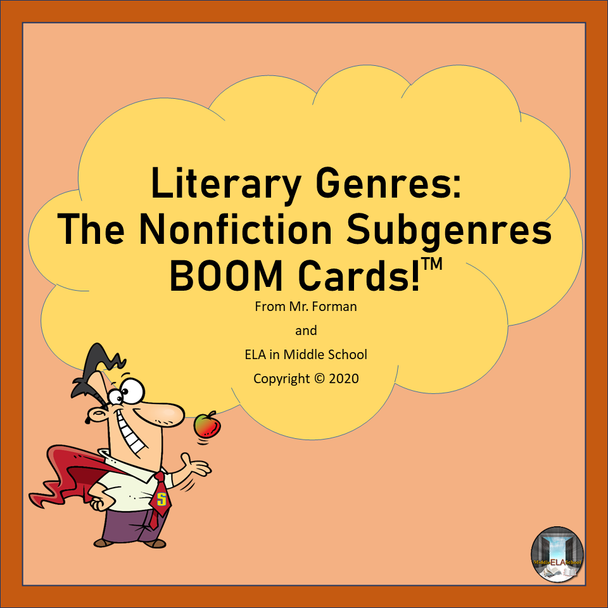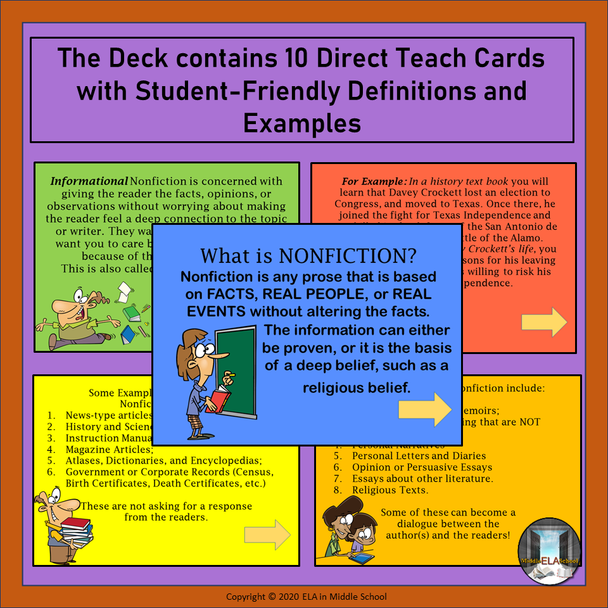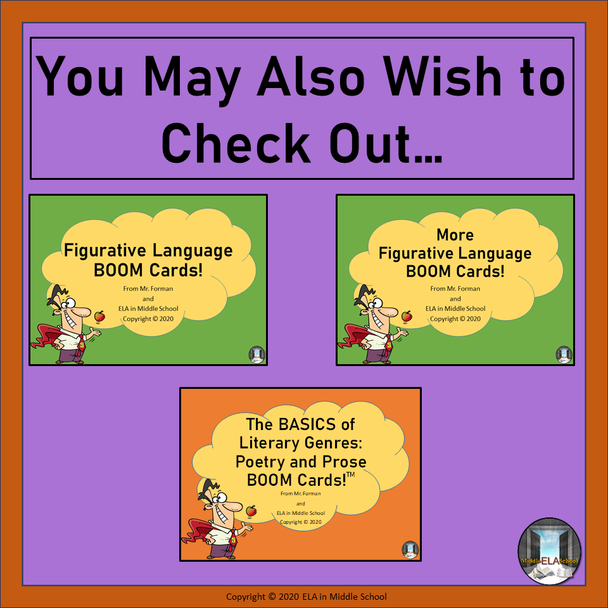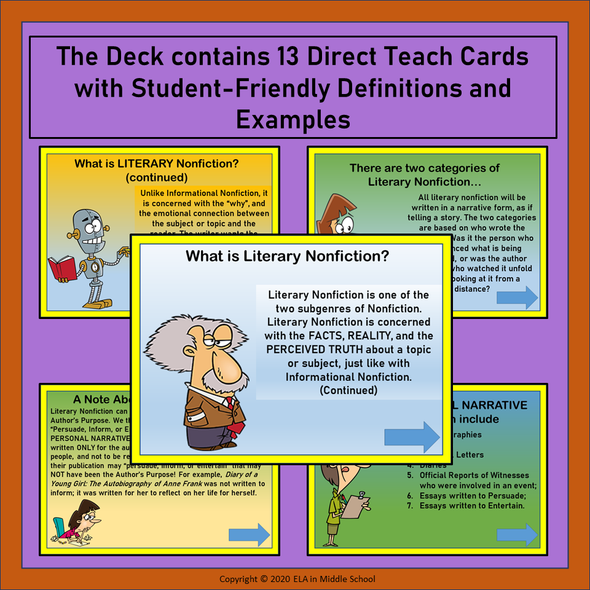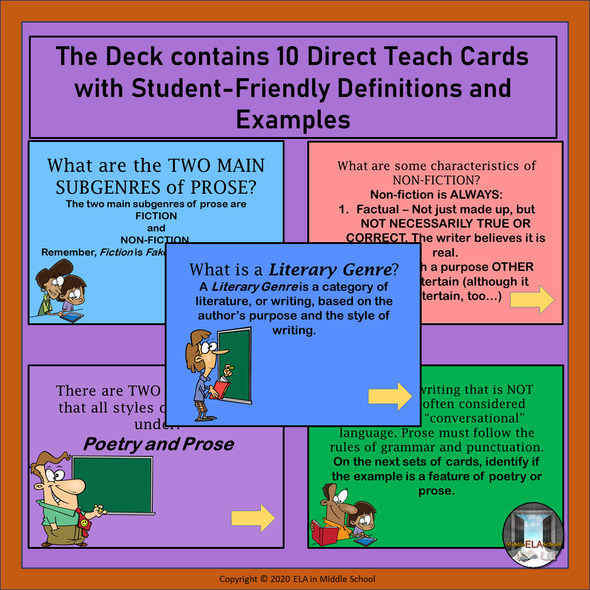Description
This Deck of BOOM! CardsTM are designed to provide student-scholars with an overview of the literary subgenre of nonfiction and to practice identifying the characteristics and some examples of poetry, prose, fiction, and non-fiction. They are specifically designed for in-class enrichment or self-paced remote or distance learning and practice, as well as for interactive review.
Literary genres can be a very difficult area to teach, and yet, we are called upon to teach them all, often in isolation, and without explanation of how the different genres fit together, or what they mean. This series of Decks, of which this is the second, was created to address this problem gap.
In this Deck, we give an overview of the features of the two subgenres that make up nonfiction: Informational Nonfiction and Literary Nonfiction. The Direct teach/Instruction cards provide your student-scholars with student-friendly explanations of the differences between the two styles, or types, of nonfiction, an example of what these differences might look like, and examples of some of the different subgenre types under the two headings. This is NOT to be considered a complete analysis of Nonfiction, only an overview!
After the direct teaching cards that ask and answer the questions, we have a activity/task cards that allow our student-scholars the opportunity to practice identifying the characteristics of the genres and what examples go with what genre. In total, there are 10 direct teaching cards, 1 instructional card, and 38 task cards. As with most Decks of BOOM! CardsTM, this set does randomize the task cards, but it does not randomize the instructional cards. We want to maintain the logical flow of topics and questions.
To use Boom Cards, you must be connected to the Internet. Boom Cards play on modern browsers (Chrome, Safari, Firefox, and Edge). Apps are available for Android, iPads, iPhones, and Kindle Fires. For security and privacy, adults must have a Boom Learning account to use and assign Boom Cards. You will be able to assign the Boom Cards you are buying with "Fast Pins," (play provides instant feedback for self-grading Boom Cards). Fast Play is always a free way for students to engage with Boom Cards decks. For additional assignment options you'll need a premium account. If you are new to Boom Learning, you will be offered a free trial of our premium account. Read here for details: http://bit.ly/BoomTrial.
We would greatly value your feedback! Please let us know how this (and other products you may have gotten from us) worked for you and your scholars/students! Is there any way you feel it could be improved? Email us at elainmiddleschool@gmail.com, and please leave feedback for other teachers to read! In addition, you can follow us through our blog, Wandering the Halls of Academia, or on Facebook at https://www.facebook.com/elainmiddleschool/?ref=bookmarks.
ELA in Middle School proudly uses Ron Lieshman’s Digital Toonage “Teachers” and “School Kids” sets in this Deck of Boom Cards!
You may also like:
Figurative Language BOOM! CardsTM
More Figurative Language BOOM! CardsTM
Literary Genres: The Basics of Literary Genres: Poetry and Prose BOOM! CardsTM
A Bundle of Grammar Fun with Crosswords (and Doodles!)!
Dominoes! Reviewing Parts of Speech - Noun Functions
LICENSING TERMS: By purchasing this product, you own a license for one teacher only for personal use in your classroom. Licenses are non-transferable, meaning they cannot be passed from one teacher to another. No part of this resource is to be shared with colleagues or used by an entire grade level, school, or district without purchasing the proper number of licenses.
COPYRIGHT TERMS: ©ELA in Middle School. Please note – all material included in this resource belongs to ELA in Middle School. By purchasing, you have a license to use the material, but you do not own the material. This resource, or any portion of this resource, may not be uploaded to the internet in any form, including classroom/personal websites or network drives, unless the site is password protected and can only be accessed by students—no other teachers or anyone else on the internet.
